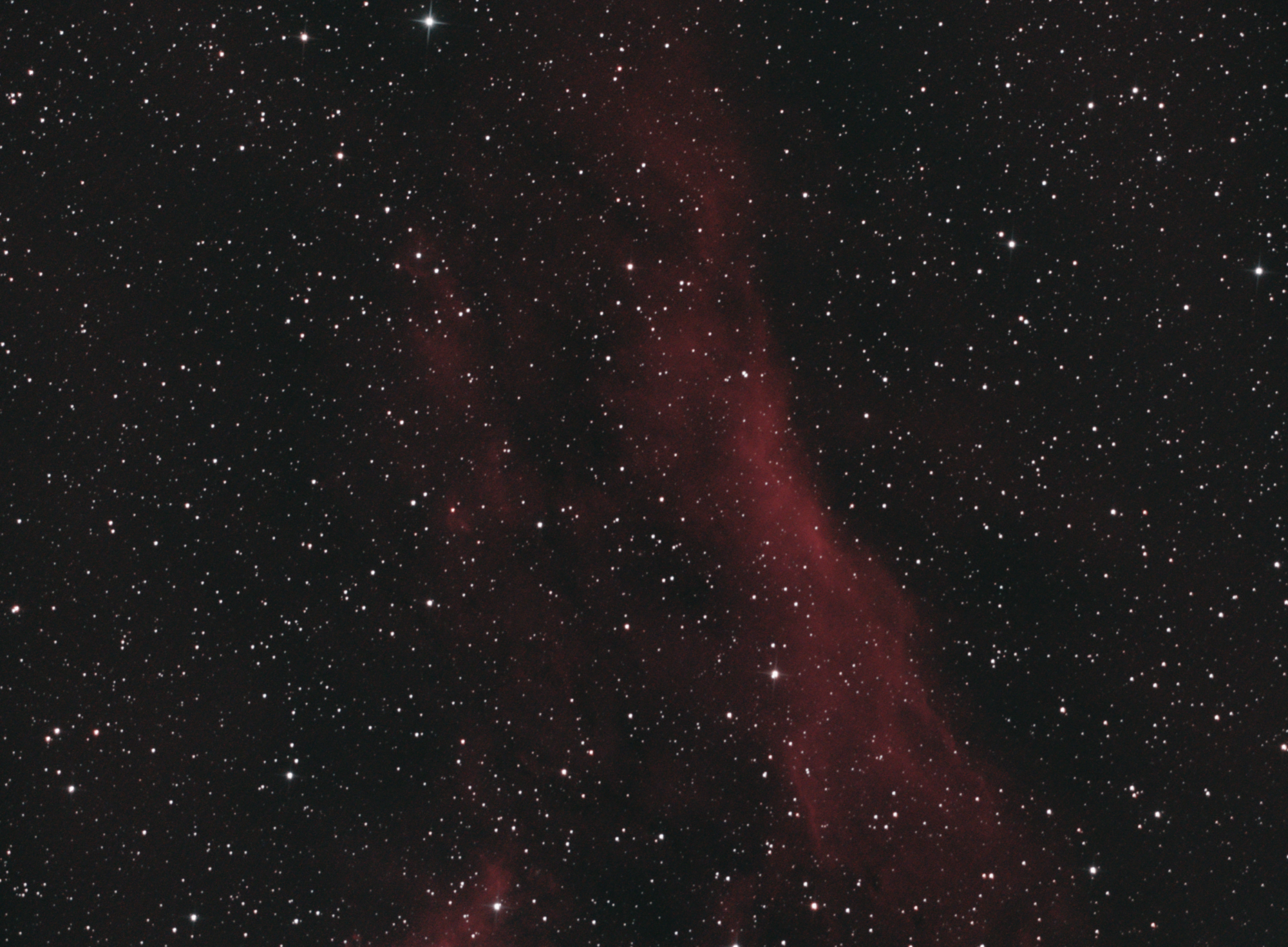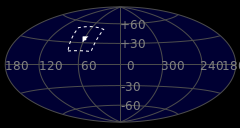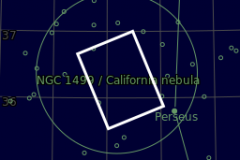
The California Nebula (NGC 1499) is an emission nebula located in the constellation Perseus. It is so named because it appears to resemble the outline of the US State of California on long exposure photographs. It is almost 2.5° long on the sky and, because of its very low surface brightness, it is extremely difficult to observe visually. It can be observed with a Hβ filter (isolates the Hβ line at 486 nm) in a rich-field telescope under dark skies. It lies at a distance of about 1,000 light years from Earth. Its fluorescence is due to excitation of the Hβ line in the nebula by the nearby prodigiously energetic O7 star, xi Persei.
The California Nebula was discovered by E. E. Barnard in 1884. A coincidence is that the California Nebula transits in the zenith in central California as the latitude matches the declination of the object. (Source: Wikipedia)
Technical Details
Date: 4/10/2016, 5/12/2016
Location: Cologne, Germany
Imaging Telescope: 8″ GSO f/4
Imaging Camera: Nikon D7000
Filter: Baader Planetarium UHC-S
Mount: Skywatcher EQ-6
Guiding Telescope: TSO 80mm
Guiding Camera: QHY 5L-II
Integration: 60 x 5 min. (ISO 1000)
Software: PixInsight, SofortBild, OpenPhDGuiding, INDI
Plate Solution

(Source: astrometry.net)



Leave a Reply